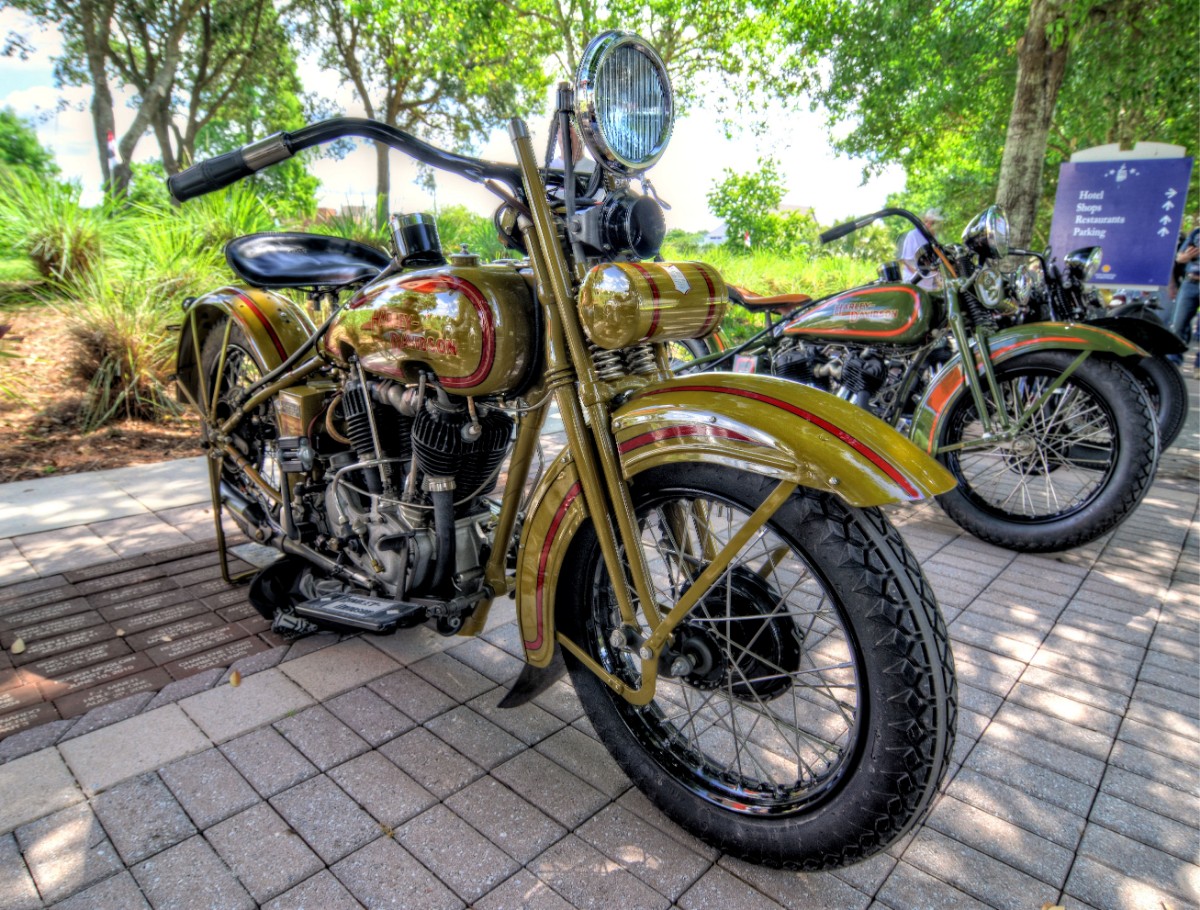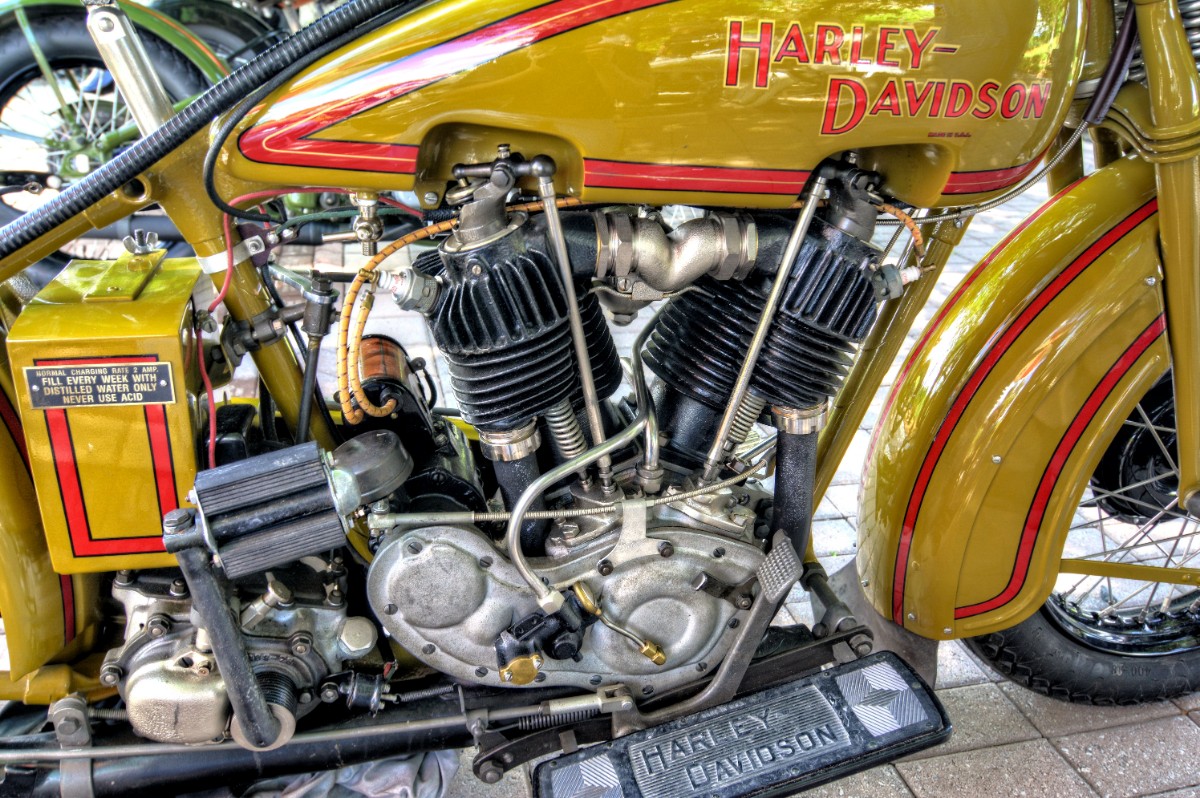
1909 marked the appearance of Harley-Davidson’s first v-twin but it was not until the adoption of mechanically operated inlet valves in 1911 that replaced atmospheric type inherited from the single that production really took off. Known as the sobriquet ‘pocket valve’, this ‘F-head’ inlet-over-exhaust engine it was built in 61ci and 74ci capacities (1,000cc and 1,200cc) and would remain in production for the next 20 years. The Harley single’s transmission arrangements and direct drive with a leather belt were also continued at first on the twin, but the need to make better use of the engine’s power characteristics. This became particularly important for sidecar pulling and prompted the introduction of a two-speed rear hub in 1914, by which time chain drive and a proper clutch had also been adopted. Later that same year a conventional, three-speed, sliding-gear transmission with step starter was also introduced with full electrical equipment, listed as the Model J (61 ci) or JD (73 ci). Year by year the models were further developed and some of the new features for 1921 were one-piece tubular steel handlebars and full valences on front mudguard. 1921 was not a very good year for the company and from mid- March to mid- April the factory was actually temporarily closed down due to extremely low sales.
You may purchase a print in our Riding Into History d'Elegance 2016 online gallery.




